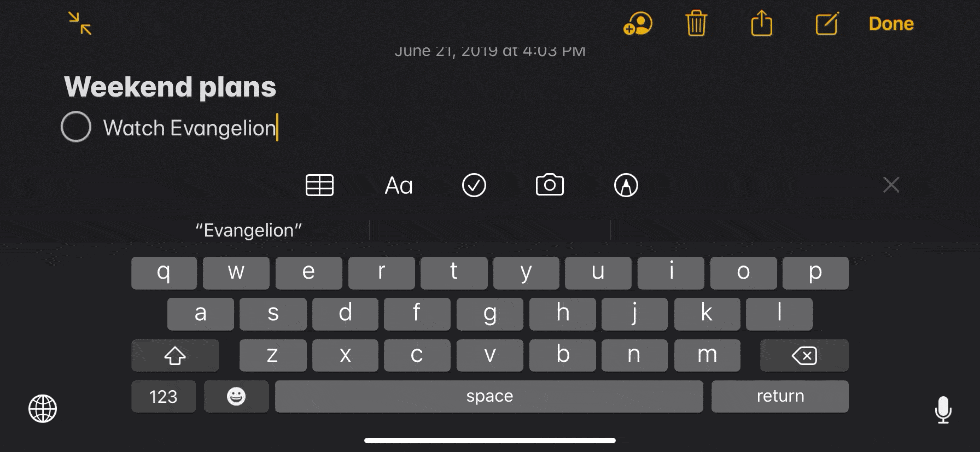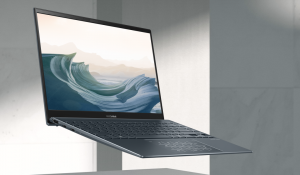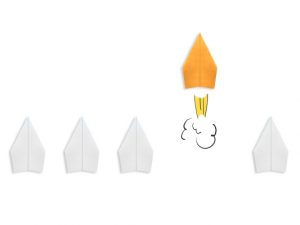According to Apple, one of the major benefits of these Super Retina XDR displays is improved brightness — indoors, it tops out at 800 nits (compared to the mid-600s you’d get out of an iPhone XS), and it maxes out at 1,200 nits when you’re watching HDR videos. That might be true, but again, good luck trying to spot the difference in real life. To properly test things, I locked myself in a dark room for several hours jumping between different 4K HDR movies downloaded from the iTunes Store. (I’d have done the same in YouTube since I spend a lot of time there, but for some reason, the app running on the Pro never offered the HDR video options it did when running on the XS Max. Weird.) The Pros’ screens were, in fact, a bit brighter at times when the situation called for it, but I don’t think you’d notice the difference unless you had the two phones sitting side by side.
It probably also goes without saying that these Pro screens look significantly better than the Liquid Retina display used in the standard iPhone 11 — they’re sharper and more vivid, and they’re capable of the deep blacks that make iOS 13’s dark mode really pop. It’s possible that the value of Apple’s Super Retina XDR display tech will become more apparent in time, but for now, at least, they’re great screens — just not game-changing ones.
It’s also worth pointing out that Apple finally got rid of 3D Touch, the pressure-sensing screen technology it’s been pushing since the days of the iPhone 6S. Now, I’ll admit it: I actually found 3D Touch really helpful, if for no other reason than it made moving my cursor around easier after I inevitably typo’d in an email. You can still do things like access shortcuts to specific actions inside an app by long-pressing its homescreen icon, just like you could on the iPhone XR. This “haptic touch” approach isn’t nearly as good as 3D Touch was, but since hardly anyone ever seemed to use it, the omission had to happen eventually.
In use
Don’t let the name fool you: You don’t need to be a pro of any sort to use these new phones. If you’ve picked up an iPhone since the X launched two years ago, you’ll know almost exactly what to expect. I say “almost” because a lot of what’s new about the experience here is thanks to the iOS 13 update, a substantial bit of software I’ll review more thoroughly once I’m done with all these dang phones.
There are a couple of neat things worth highlighting here, though: iOS’s dark mode is finally here, and it looks great on the iPhone 11 Pros’ OLED screens. Apple Maps has received some serious improvements, and I’ve been using it a lot as I drive around California. In the old days, this would’ve driven me crazy, but it’s actually pretty great now. (The best part: When you’re using Apple Maps navigation through CarPlay, Siri will tell you to make turns “after the next light.”) Meanwhile, the updated Photos app lumps your pictures into a big, algorithmically curated grid that highlights certain photos it thinks you might like. Even selecting and editing text (like this review) is easier now, thanks to a handful of new multitouch gestures.
I wouldn’t say my experience with iOS 13 on the Pros has been flawless, though. Sometimes when I’d try to turn on the Pro’s flashlight from the lock screen, the on-screen toggle changed appearance to indicate it worked, even though the LED around back never actually turned on.
Also, certain apps, like Instagram and Prisma, don’t correctly respect the bounds of the display. The former would truncate the tops and sides of people’s Stories, while the latter had some icons that were clipped by the screen’s notch. I’d expect hiccups like this if the Pro or the Max used different-size screens than usual, but they’re exactly the same as last year. I’ve also been using the iOS 13 beta on the XS and XS Max for months, and this issue never popped up on my other test devices. Fixes will be dispatched soon enough, I’m sure, but it made for a stranger iPhone review experience than I’m used to.
Less strange were the improvements Apple has made to Face ID in the Pro series. It now seems to work slightly faster and doesn’t falter as much as the XS Max’s sensor did when I was smoking a cigarette or coming in from an angle while trying to unlock my phone. The speakers are slightly better this time, too. They’re not noticeably louder, but they seem to do a better job of separating the left and right channels of whatever audio you’re listening to. The result: music and videos that sound just a little more immersive.
I know why you’re here, though: You probably want to know about how well these phones run. Every year, Apple unveils a new A-series chipset for its iPhones, and every year, the company talks a big game about how fast they are. During the company’s iPhone keynote last week, execs even pointed out how much more powerful its new A13 Bionic was than its competitors — the Snapdragon 855 and Huawei’s Kirin 980 chip — and last year’s A12 chipset.







